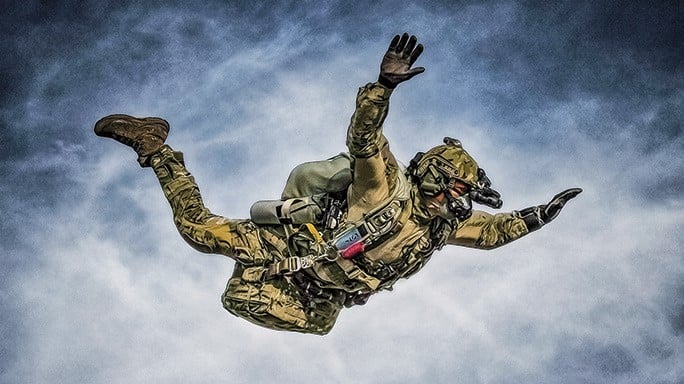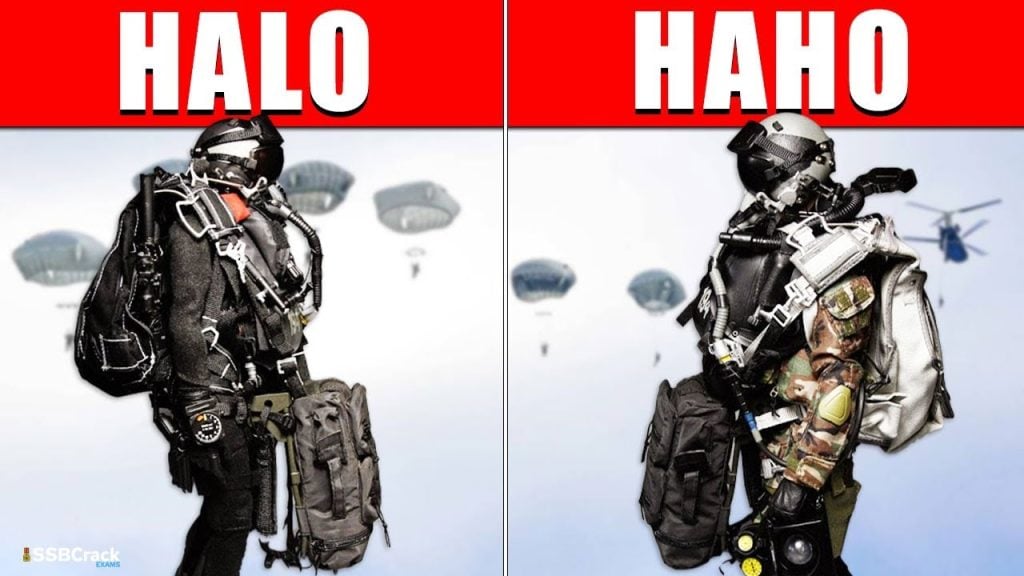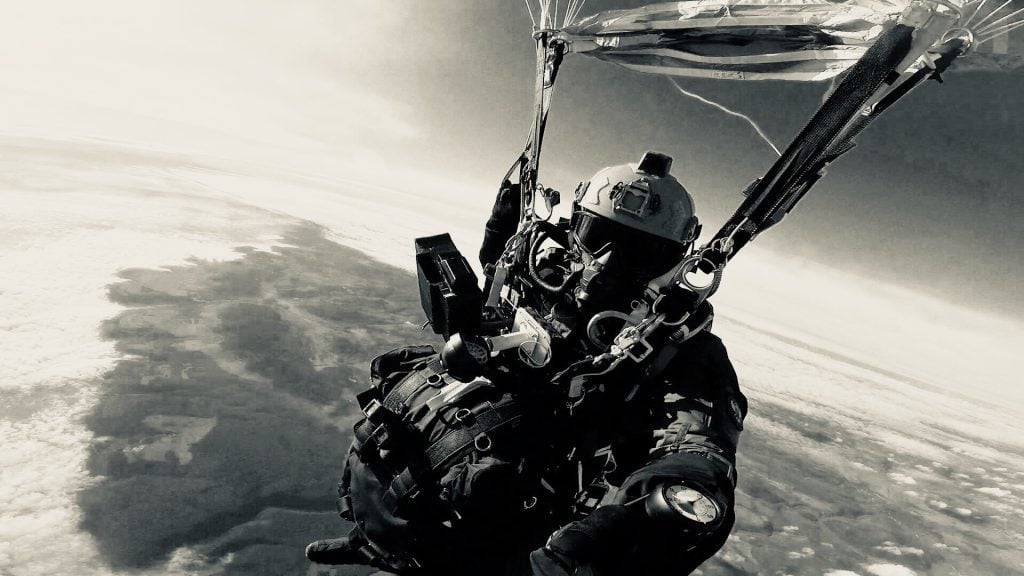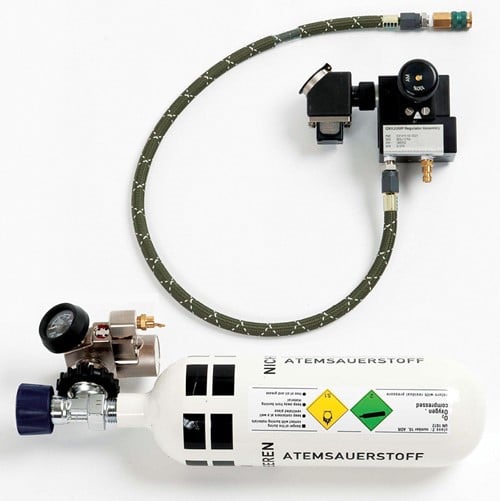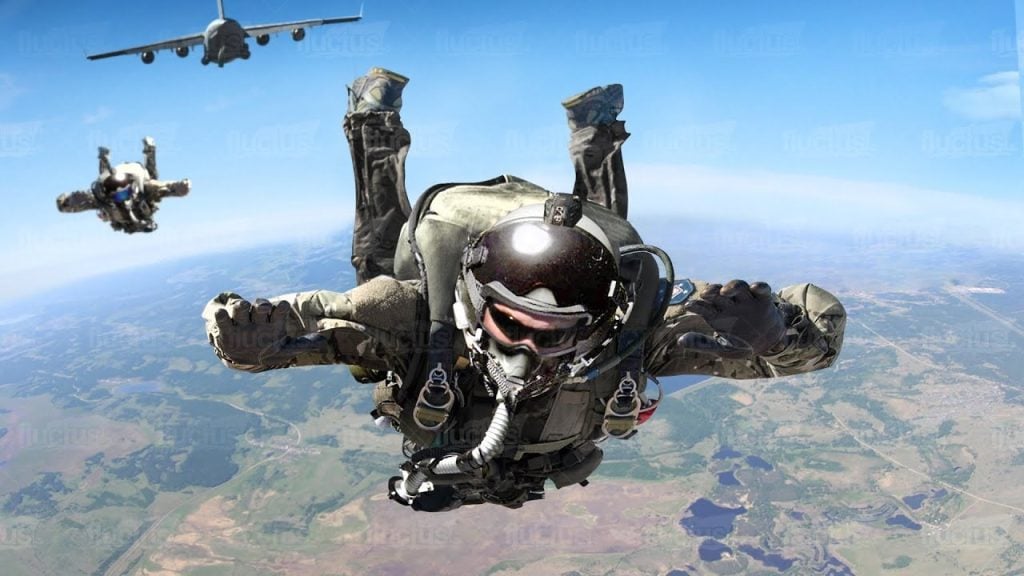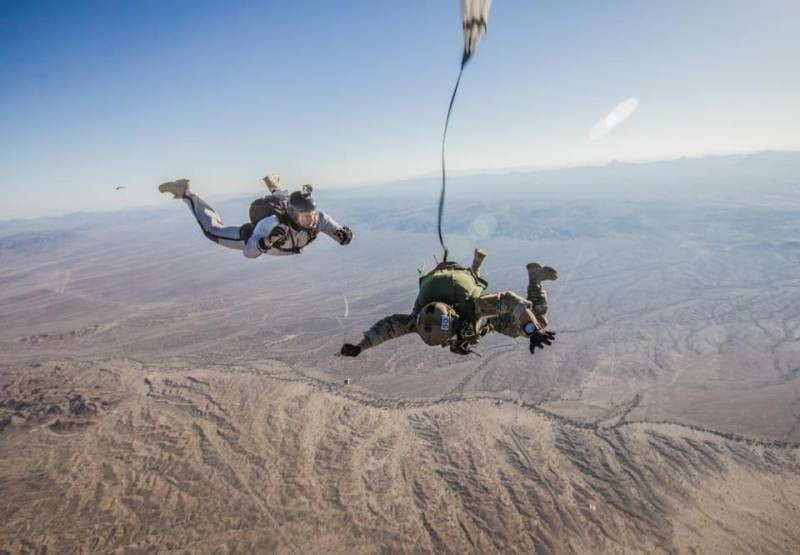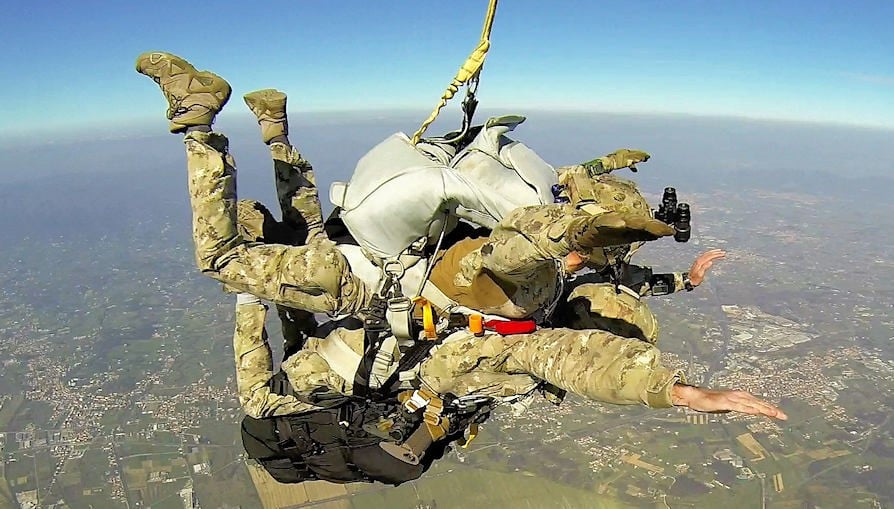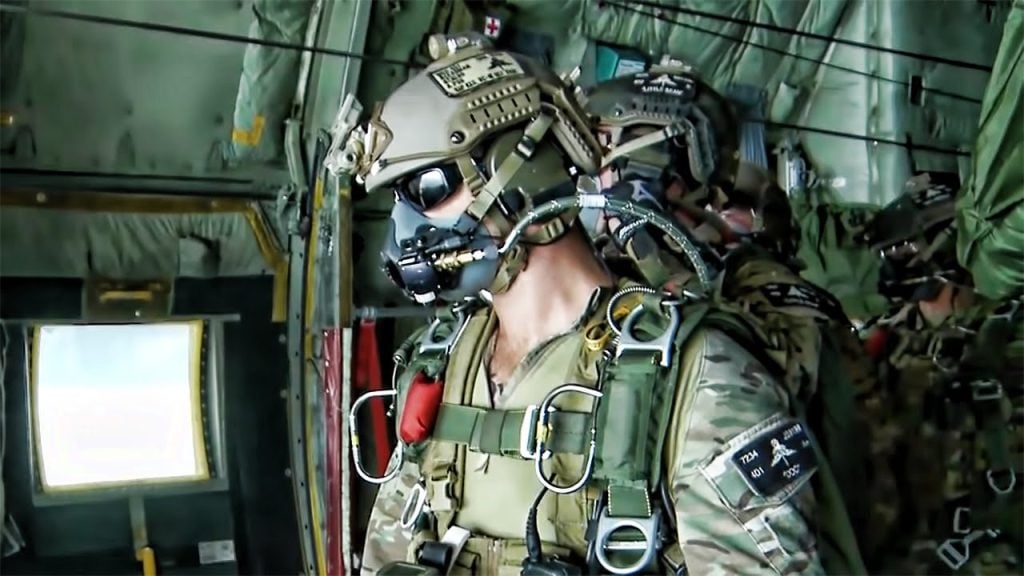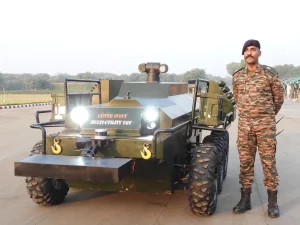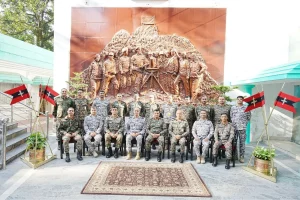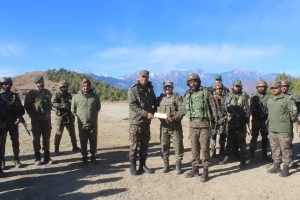The world of military operations is filled with a myriad of specialized techniques and tactics, each designed to provide a strategic advantage in the face of adversity. Among these specialized maneuvers, the HALO (High Altitude, Low Opening) and HAHO (High Altitude, High Opening) jumps stand out as pinnacles of parachuting prowess, showcasing the extraordinary skills and daring of elite paratroopers. This article delves into What Do HALO and HAHO Mean?
Unraveling the Mysteries of HALO and HAHO Jumps
In the realm of military parachuting, HALO and HAHO jumps represent the apex of precision, stealth, and tactical superiority. These specialized techniques are employed by the most elite and highly trained personnel, tasked with infiltrating enemy territory or delivering critical supplies under the cover of darkness or high altitudes.
The HALO Jump: Mastering the Art of Stealth
The HALO jump is a daring maneuver that involves the paratrooper leaping from the aircraft at an extremely high altitude, typically between 20,000 and 35,000 feet. During the free-fall, the paratrooper can reach speeds exceeding 300 km/h, allowing them to cover vast distances before deploying their parachute at the last possible moment, often as low as 200-500 meters above the ground.
The primary advantage of the HALO jump lies in its ability to minimize detection by the enemy. By opening their parachutes at such low altitudes, the paratroopers can avoid radar detection and surprise the opposition, effectively infiltrating their lines without being spotted. This technique is particularly useful when the aircraft cannot safely fly over the target area without risking engagement by surface-to-air missiles or other air defenses.
The HAHO Jump: Gliding to Victory
In contrast, the HAHO jump involves the paratrooper deploying their parachute at a much higher altitude, typically between 12,000 and 15,000 feet. This allows the paratrooper to glide a considerable distance, often up to 50 kilometers, before reaching the target area. The HAHO jump is employed when the aircraft cannot safely fly over the enemy airspace or when the noise of the parachute opening at a lower altitude would compromise the mission.
The HAHO jump’s primary advantage lies in its ability to deliver troops or supplies deep behind enemy lines without the risk of detection. By gliding for an extended period, the paratroopers can enter the target area undetected and establish a covert presence, paving the way for subsequent operations or providing critical support to ground forces.
4 Top Private Air Forces Assisting US Military Training
The Importance of Oxygen and Specialized Gear
Both HALO and HAHO jumps present unique challenges that require specialized training and equipment. The extreme altitudes at which these jumps are performed can lead to the risk of hypoxia, a condition caused by oxygen deprivation. To mitigate this risk, paratroopers are equipped with oxygen tanks and masks, ensuring they can maintain consciousness and perform their duties effectively during the jump.
In addition to the oxygen system, the paratroopers also wear specialized clothing designed to protect them from the extreme cold and environmental conditions encountered at high altitudes. These garments, often incorporating advanced insulation and moisture-wicking technologies, help to preserve the jumpers’ core body temperature and prevent the onset of hypothermia, a critical factor in ensuring mission success.
The Rigorous Training of Elite Paratroopers
Mastering the HALO and HAHO jumps is no easy feat. It requires an unparalleled level of skill, physical fitness, and mental fortitude. Aspiring paratroopers must undergo extensive and grueling training, including numerous practice jumps, simulations, and specialized instruction on parachute deployment, navigation, and landing techniques.
The training process is designed to push the limits of the trainees, testing their endurance, decision-making abilities, and adaptability under extreme conditions. Only the most dedicated and exceptional individuals are selected to join the elite ranks of the paratrooper units, ensuring that the nation’s most critical military operations are entrusted to the most capable and well-trained personnel.
The Evolution of Parachuting Technology
The development of HALO and HAHO jumps is a testament to the continuous advancements in parachuting technology. Over the years, the materials, design, and mechanisms of parachutes have undergone significant improvements, enhancing their reliability, accuracy, and performance.
From the early days of static-line jumps, where the parachute would automatically deploy upon exiting the aircraft, to the modern-day free-fall techniques, the parachuting industry has consistently pushed the boundaries of what is possible. The incorporation of advanced altimeters, automatic activation devices, and precision navigation systems has further refined the HALO and HAHO jump capabilities, allowing paratroopers to execute their missions with unparalleled efficiency and success.
The Vital Role of Paratroopers in Military Operations
Paratroopers, equipped with the skills and technology to execute HALO and HAHO jumps, play a crucial role in the success of military operations. These elite soldiers are often the first to be deployed into hostile territory, tasked with securing strategic objectives, disrupting enemy supply lines, or providing critical support to ground forces.
The ability to infiltrate enemy airspace undetected, deliver vital supplies, or establish a covert presence deep behind enemy lines gives military commanders a significant tactical advantage. Paratroopers, with their unparalleled training and specialized equipment, are the spearhead of many military campaigns, paving the way for larger-scale operations and ensuring the safety and success of the entire mission.
What Makes Today’s Armored Vehicles So Powerful?
The Risks and Challenges of HALO and HAHO Jumps
While HALO and HAHO jumps represent the pinnacle of parachuting skill, they are not without their risks and challenges. The extreme altitudes, high speeds, and precise landing requirements demand an exceptional level of physical and mental preparedness from the paratroopers.
The risk of equipment failure, unexpected weather conditions, or unforeseen obstacles during the jump can have catastrophic consequences. Paratroopers must be constantly vigilant, ready to make split-second decisions and adapt to changing circumstances to ensure mission success and their own safety.
Moreover, the psychological strain of executing these jumps cannot be overstated. The paratroopers must overcome the natural fear of free-falling from such great heights and maintain unwavering focus and composure throughout the entirety of the jump.
The Unsung Heroes of Military Operations
The men and women who undertake HALO and HAHO jumps are the unsung heroes of military operations. Their bravery, skill, and dedication to their craft are the foundation upon which the success of many critical missions rests.
These elite paratroopers embody the highest ideals of military service, risking their lives to safeguard the security and freedom of their nation. Their commitment to excellence, their willingness to push the boundaries of what is possible, and their unwavering resolve in the face of adversity serve as an inspiration to all who aspire to serve their country with the same level of dedication and valor.
How Delta Force Masters the Art of Hostage Rescue
Conclusion
HALO and HAHO jumps represent the pinnacle of parachuting prowess, showcasing the extraordinary capabilities of the world’s most elite military personnel. These specialized techniques, honed through rigorous training and technological advancements, have become essential tools in the arsenal of modern military operations.
As the world continues to face evolving security challenges, the role of paratroopers equipped with HALO and HAHO jump capabilities will only grow in importance. These unsung heroes, driven by a deep sense of purpose and a commitment to excellence, will continue to push the boundaries of what is possible, ensuring the safety and success of their nations in the face of any adversity.
FAQs
1. What does HALO mean jumping?
HALO, or High Altitude Low Opening, refers to a skydive where the exit altitude is significantly higher than the standard 13,500 feet, but the parachutes are still deployed at the usual lower altitude of 3,000 to 4,000 feet.
2. What is HAHO jump?
The HAHO technique is employed to deploy personnel at high altitudes when aircraft cannot safely fly over enemy territory without endangering the jumpers.
3. What does halo stand for?
HALO stands for “high altitude, low opening.” This technique involves military special forces jumping from a high altitude, typically between 30,000 and 40,000 feet, and freefalling until they reach a much lower altitude, sometimes as low as 800 feet above the ground, before deploying their parachutes.
4. Is HALO or HAHO harder?
Free-fall techniques involve High Altitude/Low Opening (HALO) jumps and the more challenging High Altitude/High Opening (HAHO) jumps. These high-altitude jumps require oxygen and specialized equipment to ensure the parachute deploys automatically if the jumper loses consciousness, a risk that is not uncommon at such heights.
